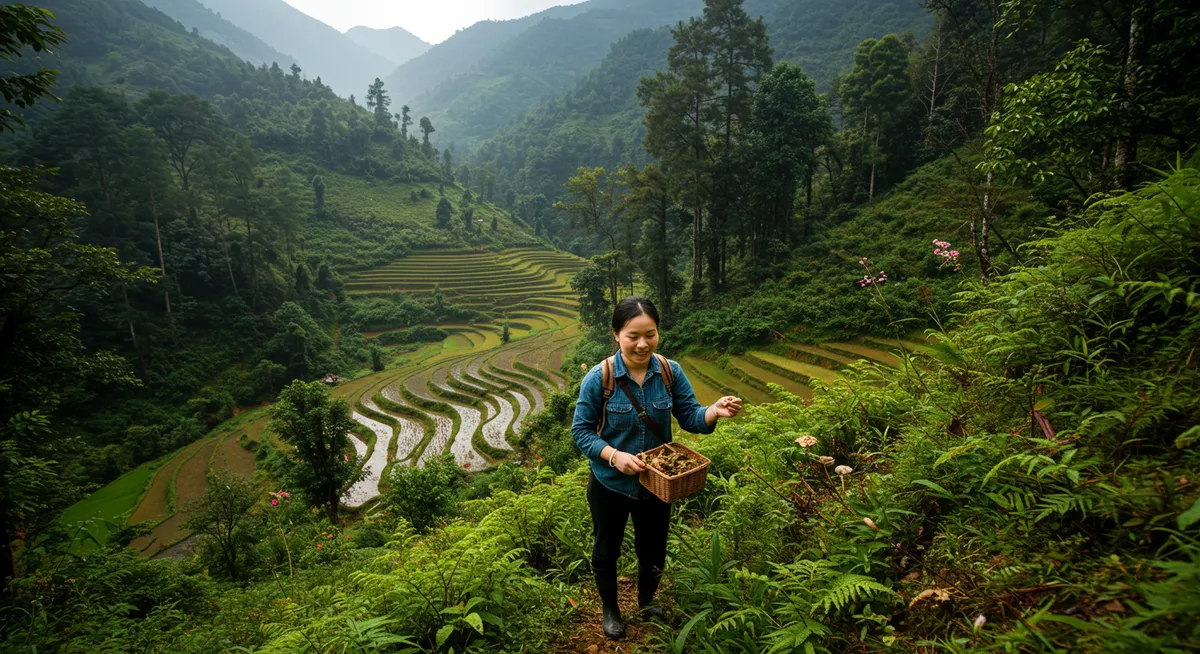
Sapa Flora & Fauna: A Naturalist's Guide
Table of Contents
Want to find the best nature experiences for this destination? Chat with our nature tourism specialist!
Get Nature TipsCategory: sapa-flora-and-fauna-guide-for-naturalists
Sapa Flora and Fauna: A Naturalist's Comprehensive Guide
Having explored Vietnam's northern reaches extensively, I can confidently say that Sapa's natural beauty, particularly its rich biodiversity, stands out. This region is a treasure trove for anyone fascinated by the intricate dance of life. This guide, focusing on Sapa flora and fauna, offers naturalists an in-depth look into the unique species that thrive in these misty mountains, ensuring you make the most of your biological observations.
Sapa's Rich Botanical Tapestry
The plant life in Sapa is extraordinarily diverse, boasting thousands of unique species. My personal favorite, the vibrant orchid family, thrives here with numerous rare varieties clinging to tree trunks and rocks. You'll encounter dense bamboo forests, ancient rhododendrons, and a wide array of medicinal herbs traditionally used by local ethnic minorities. Indeed, this unique botanical tapestry is a testament to the region's fertile soil and favorable climate. Exploring the Sapa nature attractions provides an unparalleled opportunity to observe these incredible plant species firsthand. Many species here are endemic, meaning they are found nowhere else on Earth.
Encountering Sapa's Diverse Wildlife
When it comes to Sapa flora and fauna, the animal kingdom is equally fascinating. While large mammals are rare, the region is a birder's paradise, home to numerous endemic and migratory species. Keep an eye out for colourful hornbills, elusive pheasants, and various raptors soaring above. Primates like the Assamese macaque and several langur species can occasionally be spotted, particularly in the more remote jungle areas. On one memorable trekking expedition, I spotted a beautiful green tree frog, a delightful surprise. For those undertaking Sapa trekking routes and difficulty, quiet observation often yields glimpses of these shy creatures.
Conservation & Responsible Ecotourism
Preserving Sapa's delicate ecosystem is paramount, especially given its increasing popularity. The government and local communities are actively involved in conservation efforts to protect the invaluable Sapa flora and fauna. Responsible ecotourism plays a critical role in these initiatives, ensuring minimal human impact on natural habitats. Visitors are encouraged to stick to marked trails, avoid disturbing wildlife, and support local, sustainable tour operators. My tip: always carry out what you carry in. Engaging with local guides often provides deeper insights into their conservation practices, particularly around iconic areas like Fansipan Mountain.
Key Biodiversity Hotspots in Sapa
For naturalists keen on specific observations, several areas within Sapa are renowned biodiversity hotspots. Hoang Lien National Park, encompassing much of the region, is the prime location for comprehensive Sapa flora and fauna viewing. Within the park, areas around Cat Cat Village offer accessible trails with diverse plant life. The pristine forests leading to Sapa's best waterfalls, like Thac Bac (Silver Waterfall), are excellent for birdwatching and spotting unique insect species. Early mornings are typically the best time for wildlife photography and observing active fauna, making dawn hikes incredibly rewarding for dedicated naturalists.
Frequently Asked Questions
What rare plants can I find in Sapa?
Are there large mammals in Sapa?
What is the best time for wildlife viewing in Sapa?
Sapa's incredible biodiversity offers naturalists an unparalleled opportunity to connect with Vietnam's unique ecosystems. From its vibrant Sapa flora, including rare orchids, to its elusive fauna, this mountainous region is a living classroom. By understanding and respecting its delicate balance, we can help preserve this natural wonder for future generations. Embrace responsible tourism and allow the stunning natural beauty of Sapa to inspire your inner naturalist.